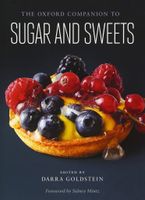Advertisement
Gingerbread History
Published 2015
Archeaological evidence shows that flat cakes made with honey and spices were baked by the ancient Egyptians, Greeks, and Romans. See ancient world. But the gingerbreads eaten today are descendants of those developed in northern Europe in the Middle Ages, when honey was the main sweetener available locally, and exotic, expensive spices were increasingly being imported from faraway lands in the East to satisfy the medieval desire for highly spiced foods. See honey and spices. Honey-and-spice gingerbreads were first made in Christian cloisters and monasteries, before production shifted to professional bakers’ guilds, and much later to home bakers. See guilds. A taste for gingerbread eventually spread throughout northern Europe, with certain cities becoming known for their own particular types of gingerbread: Ashbourne, Ormskirk, Grasmere, and Edinburgh in the British Isles; Paris, Strasbourg, Dijon, and Rheims in France; Dinant in Belgium; Nuremberg (Nürnberg), Aachen, Ulm, and Pulsnitz in Germany; Basel and St. Gallen in Switzerland: Toruń in Poland; Prague and Pardubice in the Czech lands; Pest in Hungary; Tula and Gorodets in Russia. Gingerbread recipes later spread around the world with Europeans who emigrated to North and South America, Australia, New Zealand, and parts of Africa.


